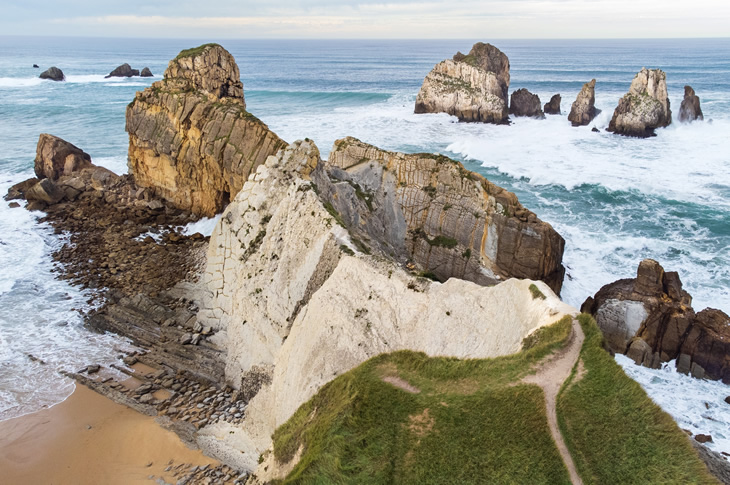Costa Quebrada enters the global elite as a new UNESCO Geopark
Cantabria establishes itself as a leading destination for sustainability and geotourism
The designation of Costa Quebrada as a UNESCO Global Geopark firmly places Cantabria on the world geotourism map and strengthens its strategy for conserving natural heritage. Stretching 20 kilometres along the coast between Santander and Miengo, this natural enclave is celebrated not only for its unique geological significance but also for its exemplary sustainable management model that engages both local communities and institutions. This prestigious recognition enhances the region’s tourism profile and complements its renowned cultural heritage — including prehistoric cave art and historic trails — cementing Cantabria’s status as a leading destination for landscape conservation and responsible development. The new geopark spans 345 square kilometres, encompassing 270 km² of land and 75 km² of marine environments. The geopark encompasses eight municipalities — Santander, Santa Cruz de Bezana, Piélagos, Miengo, Suances, Santillana del Mar, Polanco and Camargo — forming a clearly defined territorial unit from geological, geographical, historical, environmental and scenic perspectives. Over more than 240 million years, shifts in sea level, tectonic plate movements and relentless erosion have sculpted a truly unique coastline. Among its remarkable features are the Triassic salt domes, raised fossil beaches and spectacular rock formations.

This geopark is situated on the San Román-Santillana Syncline, a geological formation revealing deposits from the Upper Cretaceous and Paleogene periods, offering a unique chance to explore and understand Earth’s geological evolution. The protected area includes the Liencres Dunes and Costa Quebrada Natural Park, the Areas of Special Natural Interest of Pozo Tremeo and the Pendo and Peñajorao Caves, as well as sites within the Natura 2000 Network: Liencres Dunes and Pas Estuaries, Marine Area of the Islets of Portio, Conejera Island and Mouro Island, the Puntal Dunes and Miera Estuary, the Rogería Cave and the final stretch of the Pas River. Joining the exclusive ranks of UNESCO Global Geoparks represents a milestone for Cantabria, highlighting the vital role of local communities in protection efforts, scientific education and driving a sustainable development model.

